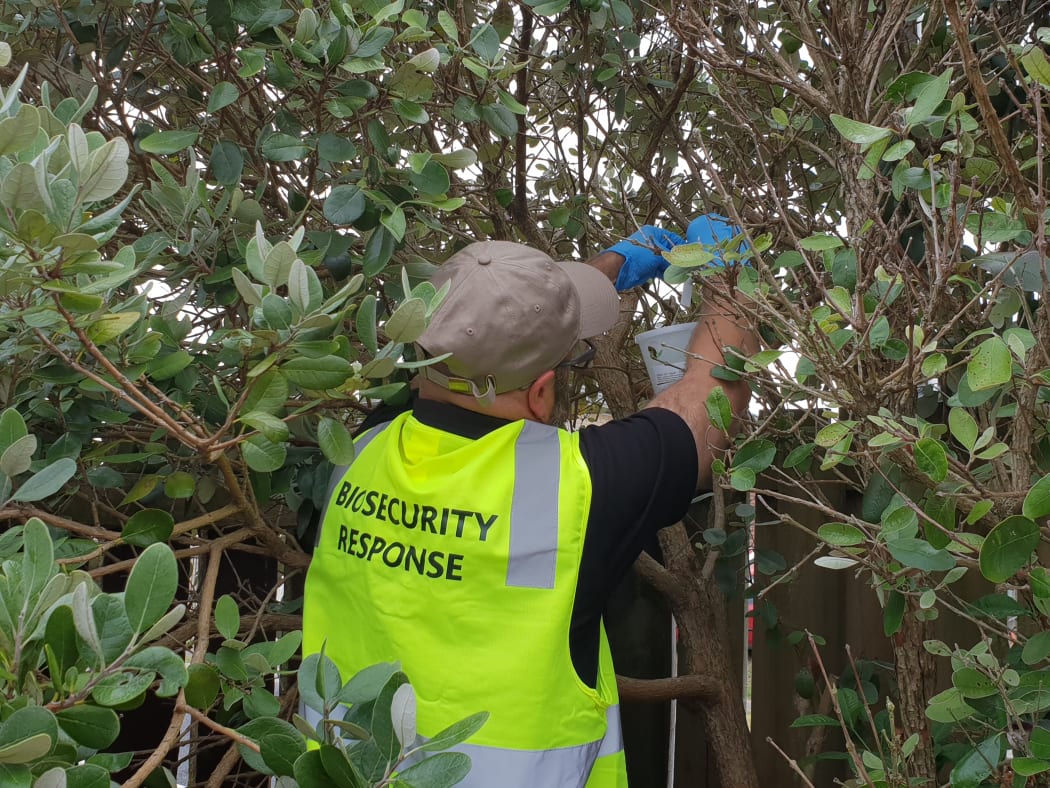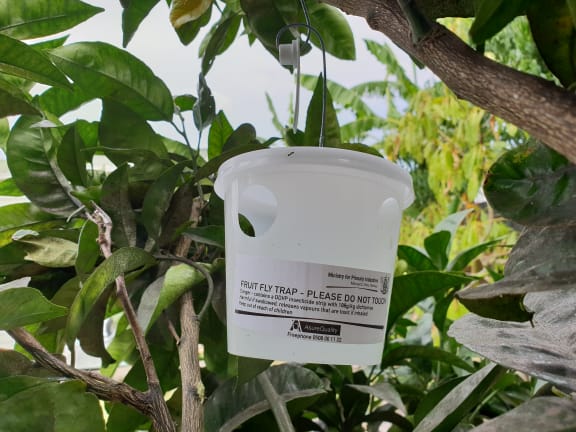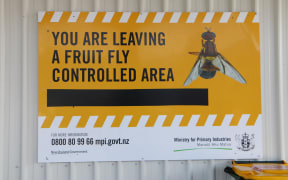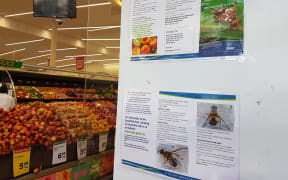Biosecurity staff are out in force in the South Auckland suburb of Ōtara, after the discovery of a single male fruit fly in a surveillance trap.

Biosecurity team set up fruit fly traps in in the South Auckland suburb of Ōtara after one was found. Photo: RNZ / Liu Chen
The find was announced yesterday, prompting a big response from the Ministry for Primary Industries.
This particular fruit fly is native to Tonga and is completely unrelated to the discovery of a Queensland fruit fly in Devonport last week.
Field teams are going door-to-door in the immediate area around where the fruit fly was found, talking to residents about what to expect.
More traps are also being set on people's properties, and biosecurity staff are checking fruit trees, vegetable gardens and compost bins for any sign of the pest insects.
The Ministry for Primary Industries said if there were any more fruit flies around, the traps would find them.
Leaflets are being distributed around the area, and they are being translated into a number of languages, including Samoan, Tongan, Mandarin, Cook Island, Māori, Fijian and Hindi.
Signs have also been set up on the main roads out of Ōtara and bins are being delivered to the area so people can safely dispose of fruit and vegetable waste.
Local community leaders are also trying to spread the message about restrictions on the movement of fruit and vegetables out of the controlled area.
Founder of the free food pantries that have popped up around the suburb, Swanie Nelson, said she had been posting information on social media.

More fruit fly traps are being set on people's properties in Ōtara. Photo: RNZ / Liu Chen
She has also been encouraging her neighbourhood contacts to get out and talk to people about what's happening.
She expected that it would be a talking point at churches on Sunday.
"We have churches on every second corner, and almost every person who's in this community is affiliated or goes to a local church, so word will spread quite quickly," Ms Nelson said.
Meanwhile, Biosecurity New Zealand said they might never know just how the fruit fly ended up in Ōtara.
Catherine Duthie from Biosecurity New Zealand said it would have arrived in egg or larvae form on a fruit or vegetable, how that fruit arrived here might not be determined.
"Like most biosecurity responses, we can almost never tell the exact pathway of entry, which is why we have this surveillance system."
Dr Duthie said this was the first time this particular type of fruit fly had been found in a surveillance trap, although it had previously been found in inspections at the border.





